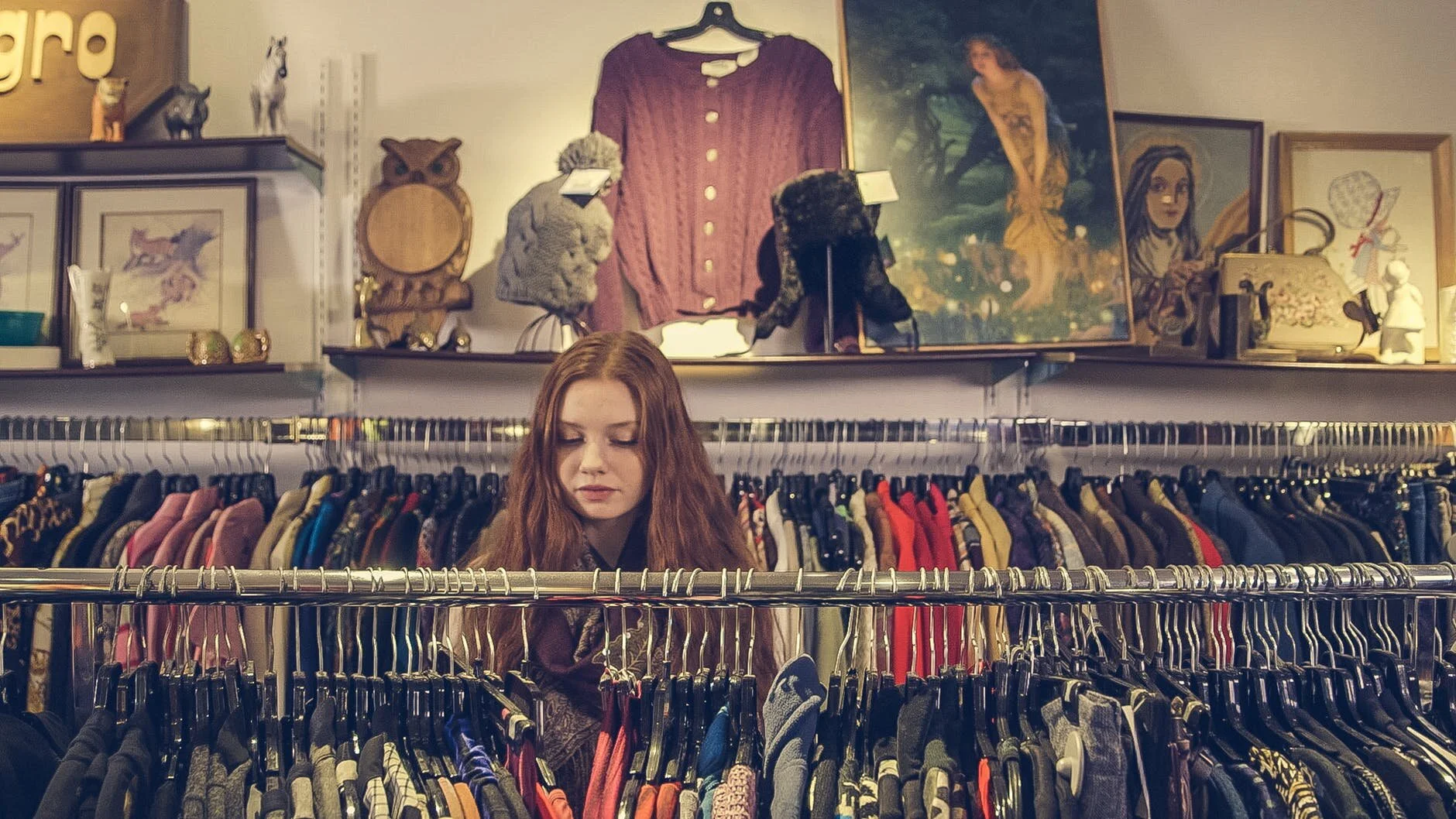5 Ways To Make Your Wardrobe More Sustainable
First blog post of 2020! I am going to ease into it with posting an article I wrote for The Bridge last fall, “5 Ways to Make Your Wardrobe More Sustainable.”
Personally, I always feel like January is not a great month to start resolutions. I am always so burned out from the holidays that anything I plan to do in January is unlikely to stick. So here we are, beginning a shiny new February, and I ask of you, have you thought about making your wardrobe more sustainable?
You may not have heard the term “Fast Fashion” but you have definitely seen it. It is the lightning fast process in which a design hits the runway, gets mass produced, shipped to the stores, purchased, worn a few times, and then discarded. It is the reason we have stores packed with cheap, low quality clothing that change almost daily.
Like “fast food,” fast fashion is anything but healthy. For starters, fashion is one of the most polluting industries in the world. From dependency on some of the highest offending greenhouse gas contributors―transportation, electricity, and agriculture―to water pollution, to more than 80 pounds of clothing per American discarded each year, it is a serious factor in climate change.
The fashion industry is also plagued with ethical issues. Garment workers are some of the lowest paid workers in the world and often subjected to dangerous working conditions that lead to tragedies like the 2013 Rana Plaza garment factory collapse in Dhaka, Bangladesh, when 1,129 died.
Since most of our clothing is made overseas, this issue remains out of sight and therefore out of mind to many Americans. In fact, according to Elizabeth L. Cline author of Overdressed: The Shockingly High Cost of Cheap Fashion “going back to the 1950s and '60s, nearly 100 percent of clothing in the U.S. was produced domestically. As recently as 1990, that statistic was 50 percent. It is now 2 percent.”
So what can we do? We need clothing. The answer lies in embracing the movement of “Sustainable Fashion” which demands a higher ecological and social integrity in the fashion industry. Although, not a sustainable fashion purist, I have learned many ways to be an active participant.
Here are the top 5 ways that I have found will make your wardrobe more sustainable:
Find new life in your old clothes: Go through your closet and take an inventory of what you own. Try new combinations. Get creative and find inspiration online or from others to find new ways to wear items you already own. Need help? Consider hiring professional to do a Wardrobe Edit. If an item is damaged or needs altering, bring it to a tailor to be fixed. Take care of your clothes to make them last longer. Wash them correctly and only when necessary. Love your clothes and they will love you.
Plan your purchases: Instead of impulse purchasing, focus on the pieces that add the most value to your wardrobe. What are the pieces you are consistently missing? Then, find high quality items to bring into your wardrobe. If you want to increase the sustainability of your purchases, research the business practices of companies using resources such as the “Good On You” app or better yet, buy locally made fashion.
Read the label: Before you buy an item, read the label for care and fiber content. If you are not willing to dry clean or hand wash an item, only purchase items that are machine washable. Try to buy clothing that is made with natural fabrics such as wool, cotton, silk and linen. Fabrics like polyester, nylon and acrylic are plastic-based and shed microfibers during the wash and contribute to water pollution.
Read more about microfibers in my blog post “Should I buy a Teddy Coat: A (not so) Fluffy Dilemma.”
Buy second hand: There are more and more resale shops in our towns and online. Give them a chance. Make it a treasure hunt. Or, start swapping with friends.
See 8 Spring Trends To Thrift Now.
Donate with care: Unfortunately, a large percentage of clothing we donate ends up overseas where it is thrown away or burned. To increase the likelihood that the clothing you donate is used by someone else, only donate clean clothing in wearable condition. Rags should be donated to institutions that offer clothing recycling or reuse your rags in your home.
Bonus Tip:
Think twice about creating special event t-shirts: Most of them are worn once and have very little value in the resale market. If you must make an event tee, omit the date and encourage people to reuse at your yearly events.
Need more facts about sustainable fashion? You are not alone. Since I wrote this article, I found a great piece that sums up the lack of information in this field at Vox.com.
Love,
Lisa

